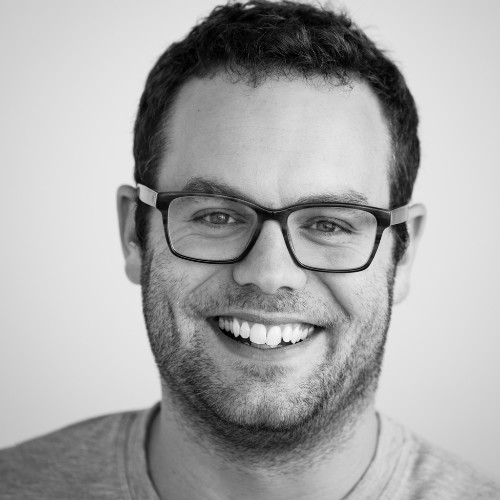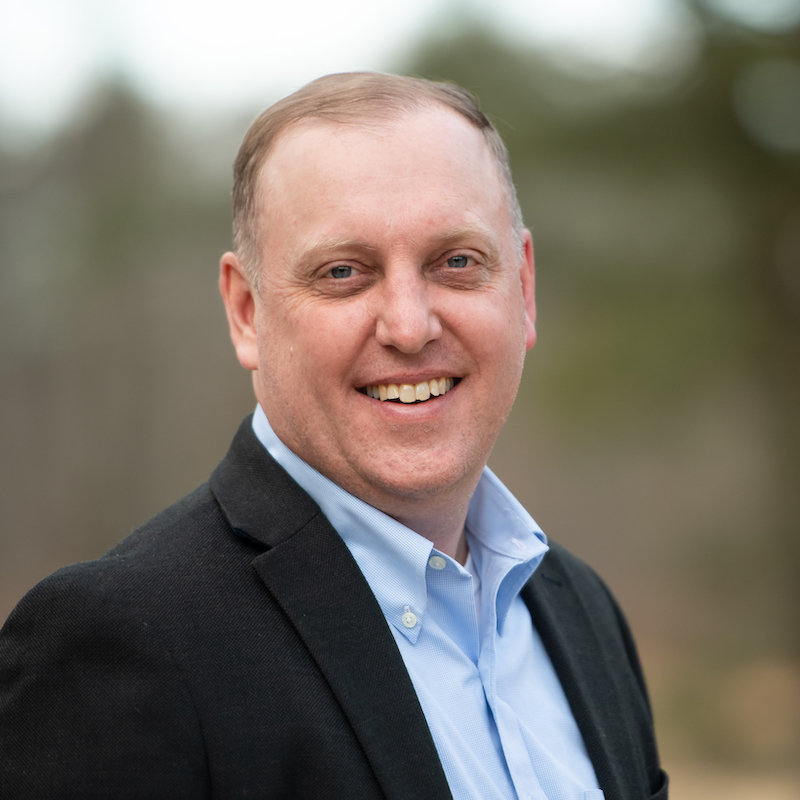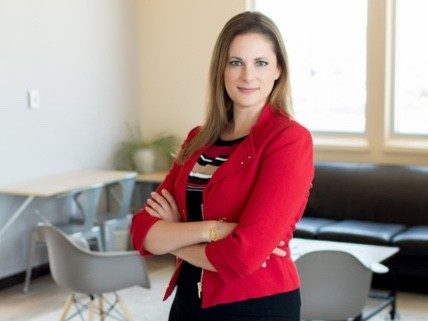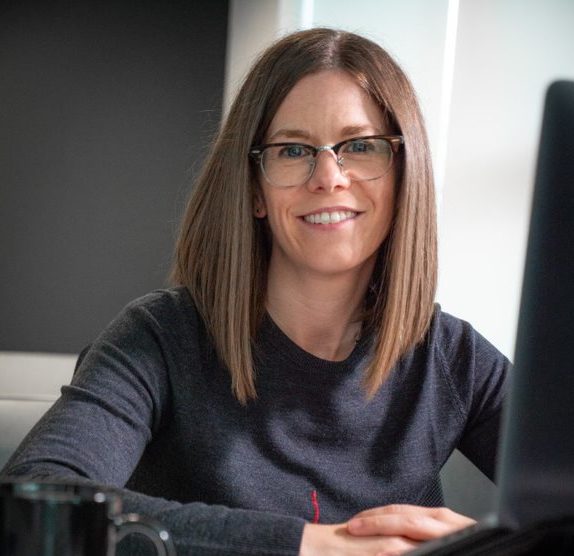Vonda Page was the first person in her office to learn how to use the fax machine.
And since then, she’s always been at the forefront of digital change.
She helps organizations understand how change management applies when adopting new technologies.
Vonda says, “People hate change, but they love innovation.” Presenting change in a new way and ensuring everyone is on board is critical to any digital change you have planned.
Watch your bias
Vonda uses the acronym ‘bias’ to look at what’s required to see change from an individual’s perspective.
Beliefs, intentions, attitudes, and self-view are all essential to having a well-formed change strategy and understanding what’s going on in the minds of the people on the team.
The recipe for the perfect change
Vonda has 7 C’s that are really essential to great change management. Each one is necessary to move things forward and make change work.
-Culture
-Coalition
-Capacity to do the work
-Competence (technology and people_
-Conviction
-Courage
-Commitment
Links
Welcome back to The Digital Workplace podcast. Today our guest is Vonda Page. She’s the founder of Radical Change LLC. Vonda, how are you doing today?
I am doing amazing, Neil. How about you?
I’m excited because you have so much energy around you, that gives me energy. So it’s just a great place to be. Let’s kick it off with our CAPTCHA question to figure out make sure that you are real live human talking to us. Your question, Vonda, is what is your go to karaoke song?
So I love karaoke. If anybody ever invites me to do karaoke, sign me up. I am right there. I have three karaoke go to songs. So it usually just depends as long as they have it. “Living on a Prayer” is one. “Love Shack” by the B52s is one. And then either “Back in Black” or something like that.
Nice. You have quite a wide variety of styles that you’re pulling in from there.
Yeah, yeah. I love all types of music. I grew up listening to classic rock, classic R&B, and then I was a teenager when rap was invented and all of that so I just I love music. So give me some karaoke anytime.
Awesome. We do some with our neighbors every once in a while. Last time, my favorite song was “Roll with the Changes” REO Speedwagon. That was a hit. That worked well.
And the thing is for me, too, because I really like to get into it. It depends on how my throat is feeling as to what song I’m going to take, because if you can’t really hit on “Living on a Prayer”, you know what I’m saying? Oh, so yeah, that’s it. That’s it.
Alright, you’re certified. You’re a human. You passed.
All right.
Cool. Tell us a little bit about Radical Change, how you get started, what do you do?
Yeah, so I founded Radical Change LLC in July, officially in July of 2020. And the LLC is actually a play on the words, Leaders Learn Change, because Radical Change is basically a disruptive learning, coaching, and advisory tech startup. And what I’m really focused on is just a relentless pursuit around building greater ecosystems of change, equity, and innovation. And so when I think about change, and the only way for it to really come about is people have to learn how to lead change. And I believe that anyone can learn to lead change in their life, whether you’re talking about personal changes, professional changes, or whether you’re talking about an overall change effort that is going to take a lot of energy and effort. So when I thought about my career as an organizational change manager and technology adoption specialist, and I thought about what is the thing that really hampers change from occurring, and it all boils down, Neil, to as the leader of the change, as the person who’s responsible and accountable for actually seeing the change through, you have to have certain skills and strategies, and it’s really about the strategy of learning change itself. And so, that’s the basis and how I got it started.
Tell people a little bit about your background, too, because you’re coming at this with a lot of technology experience. So bring us up to speed on where you’ve been.
Oh, sure. So I like to tell people I’m old school technologist, because I really started as a technologist in 1984, which sounds so crazy. But my first job, my actual first job, official job, it started off as an office assistant at an insurance company. And on the second day or third day on the job, a fax machine was delivered. It was my job to figure out how to use the fax machine after the person who delivered it set it up. It was my job to figure out how to use the fax machine, train everybody in the office how to use the fax machine, and then actually use the fax machine to help our customers send faxes, because prior to that, we were doing telegrams and things like that and helping people with what we call snail mail now.
What is this? What is this telegram you speak of, Vonda?
So a telegram was a way that people…
For all the kids listening in.
For all the kids, a telegram is kind of like a cross between a phone call and a mail.
Telegrams are the first text messages.
Right, right, right. And so, it just started really early. And you can look at a fax machine as being the first email, right? And then I worked in other early technologies, too, such as electric data interchange, and other things like that. But really, I began my career learning how to use new technology, teaching people how to use that technology. And then the organizational change piece comes in is where when you get new technology, you have to look at how it affects people as well as the processes. And then you have to build in systems or structures or other resources so that things can move smoothly. So it all factors into you’re looking at what is the impact of technology on people and processes. My job has always been how do I help people adopt it and use it in a sustainable way, improve later, but without having a negative impact on the everyday way to do your job or the everyday way that the customer interacts and experiences it.
So from showing people how to use a fax machine and using a fax machine to send important messages back and forth, to then email and then working on cloud technologies and all of that, throughout that entire process throughout my entire career in all of those different aspects, Neil, I have helped leaders understand what they need to do to help their organizations move through change without having a negative impact. So it’s really bringing together technology experts, business leaders, people to whom the change is going to impact or affect, and looking at all of those things together to try to ensure a smooth transition. So when I think about why I started the company and how that plays itself out, is I really want to help leaders understand the criticality of their role, and give them the skills specifically so that they can drive change as necessary, so that it just doesn’t have to suck in the process.
Yeah. So let’s break this down. Because I think everyone that I know that’s in this world of trying to build the new digital workplaces is thinking about, oh, man, do we have the right tools in place right now? What do we need to add in today? What do we need to add in next year? What’s coming down the road? So there’s no one who’s immune from thinking about technology and how they need to implement it and adopt it. And so change is just going to be a constant as it comes through in the next five years. But like you said, it seems like there’s all sorts of negative reactions people can have, whether or not they just stonewall the technology and say, nope, not using that, whether they feel like they get steamrolled and just say, no, yes, you are using this or you can leave the company type thing. So how do you get around those negatives? Give us a nice, happy story of how companies can actually include people everyone’s going to be involved in to build this change?
Yeah, and you’re spot on with it. Because it’s so funny. I say people hate change, but they love innovation. It’s really about the way people think about things. And it starts at how we frame up things in our thinking. And so I have taken the word bias, and I’ve changed it to a specific acronym to help people understand why we have a hard time with change and why we have a hard time, whether we’re talking about leading a change, digital transformations and looking at different ways to implement machine learning, versus somebody saying, yeah, I’m gung ho and I’m all the way, want something to happen. It’s really about our bias. So I break bias down as, number one, our Beliefs. So our beliefs that we build and form really inform our thinking. So whether we’re talking about how we approach change or other things, our beliefs are part of what goes into that.
The I, I say is our Intentions and what the impacts of those intentions are. So we may say we all come to work every day to do a great job. Nobody says, oh, I’m going to go in and be a slacker today and be terrible. So we have a good intention. But there may be other things that come up and our beliefs affect how we might go about that. So we have our beliefs, and we have our intentions. And then the A, I say A is our Attitudes. So it’s the attitudes that we have about the situation, about the person, about the experience. And our attitudes are then reflected in our actions and the things that we do. Then I say that S in bias is our Self view and the way that we show up in the world. So if we look at our beliefs, our intentions, our attitudes, and our self view, that is what I believe is really at the core of how we think about and understand change.
So my first piece of advice as I’m helping people to understand how to even open up a mind set to be able to think about change in a positive way is examining your own biases as well as the bias associated with whatever the change is that you’re trying to undergo. So it really starts at taking a good look. Then it really goes to, okay, if I’m trying to implement a change, I need to make sure some things are in place to guarantee or better guarantee that I’m going to have good results. So I just call that the seven certainties of change. I talk about in my TED talk and in some of the conversations that I have with people, but Neil, I’ve really learned over the last 30 something years, that when the seven C’s are in place, it does make change easier.
So that first C that I talk about is all around the culture in which you’re trying to implement a change. What does that look like? When we think about some of the biggest and best companies out here, you think, how companies have acronyms, or people use a company name as a verb. That is the things that point to the type of culture that you have, because you have to be in a culture that people are all aligned and thinking the same way and where leaders are actually walking the talk as opposed to saying, hey, we’re going to implement something, they’re actually involved and they’re actually serving as advocates, and activists, and communicators for the change. So having that culture is the first piece.
Then the second C I talk about is really around having a strong coalition, a coalition of people who are in alignment and agree around what needs to happen. Now, some of those people might be resistors or detractors that are not 100% on board, but it’s your job as a leader of that change to bring those people on board. Because you really think about any significant changes that have happened over time, they all take a coalition of people working together, not one person make something happen. Martin Luther King didn’t get civil rights done right by itself. You think of anything, it just doesn’t happen with one person. So you have to have a strong coalition of people working together.
Then you have to make sure that within that structure, so going back to the insurance company that I worked for, that we all have the capacity to do the work when the time is necessary. So I was a brand new kid on the block, brand new to come into the office, well, I had time to learn how to use the fax machine, to troubleshoot it, and to teach people how to use it. If I hadn’t come into work, and they got a new fax machine, while everybody else was already heads down doing work every day, there’s no way we would have had the opportunity to learn how to use it, and then how to implement it or integrate it into our other work processes.
Yeah, I think about that, even with companies now when they’re trying to adopt new technologies, do they have somebody who’s just going to sit there and learn this tool and understand it? Or is everyone so busy that no one really becomes an expert in it?
Absolutely. So that’s why you have to measure all of those things. And you look at, you know how even, for example, at certain times of a month, different companies, especially companies that do things like finance or billing, where everybody is heads down trying to get a certain piece of work out the door or an urgent project or an outage of some sort, or something goes down, everybody is focused. So if you don’t really have the capacity, the space, the time, the resources and the bandwidth, then you’re going to struggle with it even more. And then the other piece is you really need to make sure that the competence is in place so that you as the leader who’s leading the change, that you feel competent and know that you have the skills and experiences that are going to help you with that. But then also, that you have competent people and systems in place. If you think about, let’s say, trying to use a complex digital platform, whether we’re talking about a platform for streaming or something that, let’s say, takes up a lot of bandwidth, but you got a bunch of old, clunky, computers from 2010 and 2012. But you think they’re going to be able to be good enough and have enough power to be able to do these new capabilities, well, you need to examine and look at all of those things as well.
Yeah, when you said these old, clunky, immediately my mind thought you were going to say like a person, but you’re talking about the technology, because the competency has to be there from the technology and the person that’s working on it.
That’s right. That’s right. And I found that there’s no shortage, especially in the tech industry, there’s no shortage of brilliant people, like literally. I mean, you can turn your head to the left and right, and there’s all kinds of super smart people. But we have to make sure that all those other pieces are in place, because you can have super smart people, you can have great jazzy up to the cutting edge systems, you can have the time and the space to work on stuff, a coalition of people, a good culture. And with all of that, though, you have to really get down to being convicted in your mindset and say, this is the change that we know we need. So whether we’re talking about changes relating to something like increasing equity among pay equity among women in the workforce, especially in technology, or whether we’re talking about switching over our cloud provider, it doesn’t matter what type of change you’re trying to implement, you still need the same principles.
And when you get to that point where you put all the ducks in the row to make things happen, then you have to really pull out that courage and say, okay, now we’re going to go forward and make this happen. Because change is scary, right, Neil? And you can think of all types of changes that cause people anxiety and fear, going to a new school, moving, starting a new job, getting a new manager, becoming a new manager, getting a new computer. I was on the phone on a call this morning with one of my clients who just got a new computer two weeks ago and it’s randomly restarting, without even giving enough warnings. It’s like 60 seconds, and it’s shutting down. And so think about the productivity she’s losing because this brand new computer is just randomly shutting down, and she can’t figure out what are the settings or what is happening so that she can stop it. And so these are all things that unfortunately happen. But they cause that anxiety, they cause fear, but it’s just really important to say, hey, I’m going to have the right attitude. And that attitude is going to help me approach it in a way that is going to be helpful and beneficial.
Wow, when I look at this list of all these C’s to pull into things. I get overwhelmed when I think about if I want to introduce a new tool on my team, or I want us to make a change in behavior, it almost seems like alright, man, this is going to be overkill to try to get all these done. But when I look at all them, it’s like, well, what do you leave out? You got to have them all or else you’re setting yourself up for failure.
You are. And the thing is, they’re not complicated. I mean, you’re talking about a culture. You set that up, you can have an intentional culture. So I started a startup, right? So I’m really focused on what kind of company do I want to be. And I want to, first and foremost, protect people’s privacy and be making sure that I’m protecting data, because we know that’s a concern right now, especially in the technology industry. And we have a lot of breaches, and we see things happening all the time. Integrity, that’s another thing that I’m building within my culture. And so you can have a company culture and then work on different characteristics and components of that culture that you want to bring forth. But think about it from the standpoint of, you want to have a change capable culture, you want to have a nimble, flexible culture. Because when you do get a pandemic, when you do get some kind of crazy outage, when you do get civil unrest, or God forbid, a tsunami or something, you will be much more equipped to handle a disruption if you’re already change capable.
Yeah, I love that point so much. It’s like, if you try to start all this stuff because you’re doing a new tech adoption, you’re late to the game. You should have been doing this a long time ago, and building this culture where you do have a coalition around people, you know who you can depend on, you know who’s going to be using this. You do have people who have the capacity to do that work. You’ve built in extra time in their schedules, you know who’s there, you’ve built up competence, you’ve built up conviction, and you’re not really adopting new new tools until everyone realizes we got to have this and it’s all that there.
Yeah, you got it, you got it. And then that last piece, so once you have that, and as that leader, regardless of what you’re leading, what you’re doing, you could think about it in the context of a family, you could think about it in the context of a community group, you can think about it as a team or a company, being courageous enough to go for it for the things that you know. And change, because it’s scary, is that thing that sometimes makes people hesitant about whether or not they really want to pull the trigger and make it happen. So in technology, when we are going to implement something new, we have a go, no go discussion. Like, okay, are we going to do it or not? So that’s that point between courage and making that decision and then being committed. So after we go through that go, no go conversation. And we say, okay, we’re going, that’s the commitment. And that’s that final C, that helps to drive the certainty.
And so that’s why certainty is one of the core values of my company, and then how do you help to ensure certainty as you put things in place? And you also have, Neil, measurable, meaningful metrics that are really going to help you to see if you’ve made progress, how much progress, how much more room you have to grow, and then how do you think about it from a sustainability and then an improvement standpoint afterwards? All of those pieces coming together, that is really the thing that’s going to help to drive change. And the reason I call my company Radical Change is because that doesn’t seem that hard, it doesn’t seem that complicated. But it’s radical from the standpoint of how we’re approaching it now. Because the way we approach it now is we need to make a change, we’re going to do this thing, we’re going to get some communications out. Oh, it’s so simple. Everybody could use it. It’s an intuitive app. It’s an intuitive process. Well, guess what? Nothing is as intuitive as people think. Because we don’t even have enough people when we go to bring something new to market to test it, enough people to test out the design, to test out the usability. Because if that was the case, then every product would be used by 100% of the targeted consumers. And we know that that doesn’t happen.
Yeah. And I love that, too, the commitment part of it, because it is going to be rocky. You are going to run into problems, whether it’s the product itself, or how you’re using it, something’s going to go wrong, somebody is going to get upset. But having that commitment ahead of time saying, we all know this is not going to be perfect. So when those rocky times come, when that turbulence comes, we know how to respond, we’re still committed to this, we’re just going to back out of it. Man, I’m both excited and overwhelmed thinking about what it requires to do change. So let’s just put this in context. A lot of people that I talk to, they’re in the middle of this transition to hybrid work. And maybe they’re sending out those emails to say, hey, the office is open if you want to come. And they’re not seeing a lot of people come back. Some people are coming back that are really committed and enjoying that. But a lot of people are saying, maybe not. Either they’re waiting for longer, or they just really enjoy the flexibility they have right now. So as they’re in that situation, I feel like many people are going to be experiencing the same things. They’re like, okay, well, we need to find some permanent solutions to having this hybrid workforce. We’re going to have to transition a lot of our headquarters from a physical location to a digital location and it’s going to take a lot of work to be able to do this. And like you said, on one hand, one person who’s been researching may see, hey, it’s easy. Everyone just put all your chat stuff here. Everyone put all your decisions stuff here. Everyone do meetings here. Like, it’ll be easy. But that’s rarely the case, right? You got to plan for it. And you got to have somebody helping you think about it, too.
Yeah, it’s never the case that it’s that simple. Because what happens is people get busy, even when you think about your own life and things that you need to do every day. So, my advice for any change, especially now as we’re looking at all the shifts that are going to be happening in this new digital hybrid of a workplace, first and foremost, my advice is to assess your audiences and the stakeholders that you’re talking about and then really listen to them. Because one of the things, it’s been all in the nerd news, the tech news the last couple of weeks, is there was all this study done about people who want to come back to the office and people who don’t. There’s a lot of conversation, especially around women and black and brown women and black people who don’t want to come back to the office because they feel like it’s less harmful, it’s less discriminatory. And so they’ve done all these studies and surveys about who wants to come back and don’t, and something like 60% of people don’t want to come back to the office.
So when companies make the broad announcements about they want employees to come back to work, my advice, first and foremost, is that they assess the actual sentiment and the situation and do it in a deep way so they can find out, if we go ahead and do this, how are people going to feel about it? Because what we learned is that from all of the information that had already been gathered, employees, especially in big tech, they said they didn’t want to come back to the office, but companies said you have to come back. Now, because of pushback, now they’re having to backtrack on those decisions and say, okay, well, we’re going to give you a choice. Well, from the very onset, they could have avoided all of that, saved all that time, money, negative press by doing some assessments. And that goes back to what I said to you about certainty. You can be more certain about the success and the outcomes of your change effort. But you need to put some things in place. And you need to assess some things, you need to assess that capacity. So if they would have done some deeper dives to determine what does that really look like and then start to think about it, have a coalition of different people who can bring different perspectives to the table to help make a better decision going forward. So it’s really, Neil, about listening, getting the information to make the right decisions, but really setting up yourself for success by putting those things in place.
Wow, so much to think about. Vonda, this has been amazing. And this is definitely not the last time we’re going to reach out to you to hear what’s going on, because everyone’s going to be in the middle of this for the next, I don’t know, 10, 20 years.
Forever.
So we’ve got our work cut out for us. Tell people where they can go to get in touch with you and learn more about yourself.
Absolutely. So people can go to my company website, which is radicalchangellc.com or they can go to vondapage.com. They can reach out to me on LinkedIn. I’m Vonda Page 03. And I am available to help people understand more about how to lead change.
This has been fantastic. I’m going to do some background research, because I really don’t believe you that you were starting your career in 1984. It just seems a little old. You got too much energy to be like that. So I appreciate you coming on. You’ve done awesome work in helping us think about change and we look forward to talking with you again.
Thank you. It was a great conversation and I’m looking forward, too. Take care, Neil.
Vonda Page is the proud Founder and Chief Executive Officer of Radical CHANGE LLC™, a disruptive learning, coaching and advisory start-up driving change, equity and justice.
Throughout her career, Vonda has led transformational change in complex and disruptive circumstances and achieved ground-breaking results for her clients. She has more than 30 years of leadership and management consulting experience, being the thought leader, trainer, program manager and executive strategic coach for Organizational Change Management (OCM) Technology Adoption.
Vonda’s innovative work spreads across dozens of high-impact technology initiatives and top corporation.
Ms Page is an avid Science Technology Engineering and Math (STEM) patron and early technology career mentor for Black, Brown, Asian, Indigenous and Immigrant women, girls and gender nonconforming/non-binary people.
Ms. Page supports Prairie STEM and CodeHouse and is passionate about lifting others who can benefit from her experiences as a Black woman in technology.












